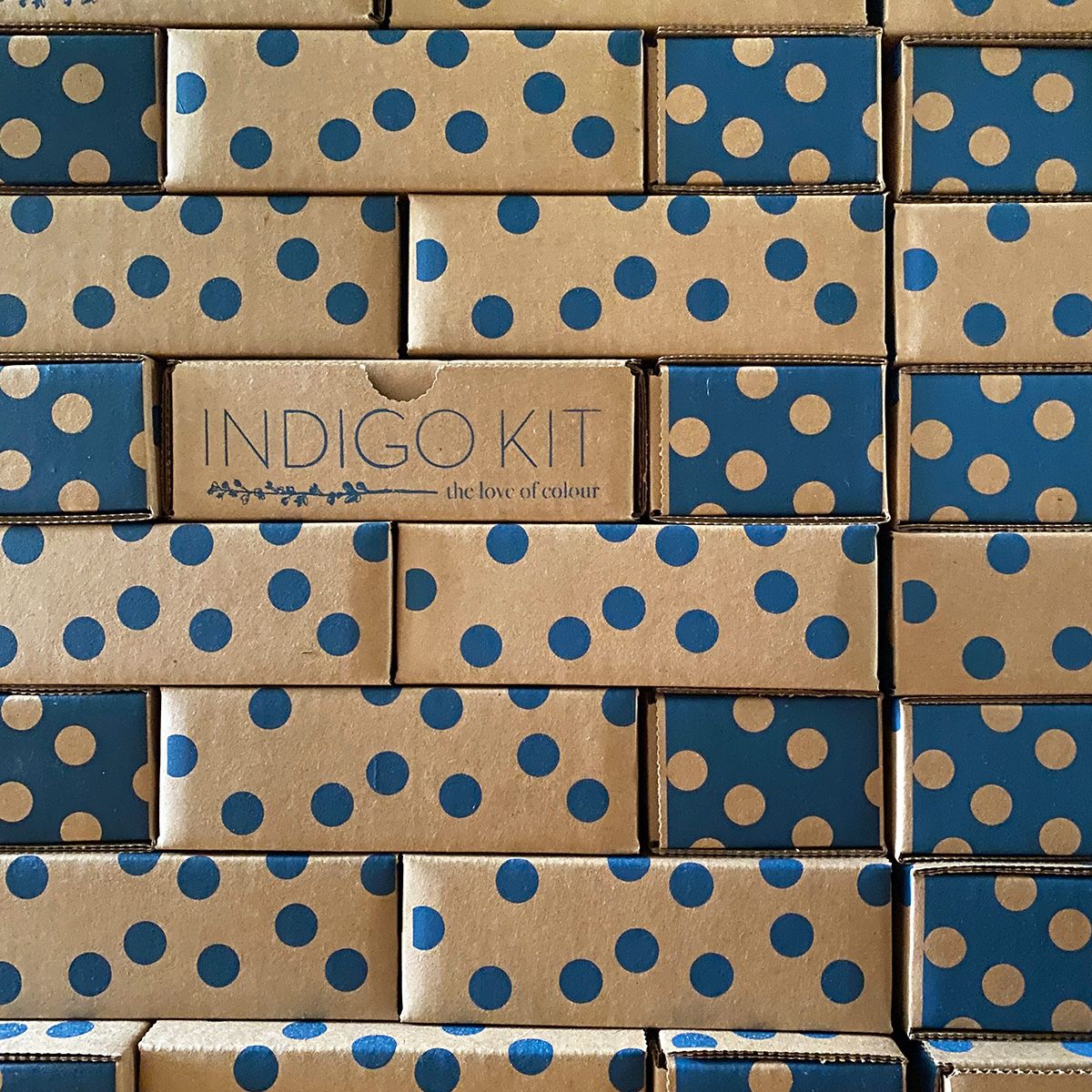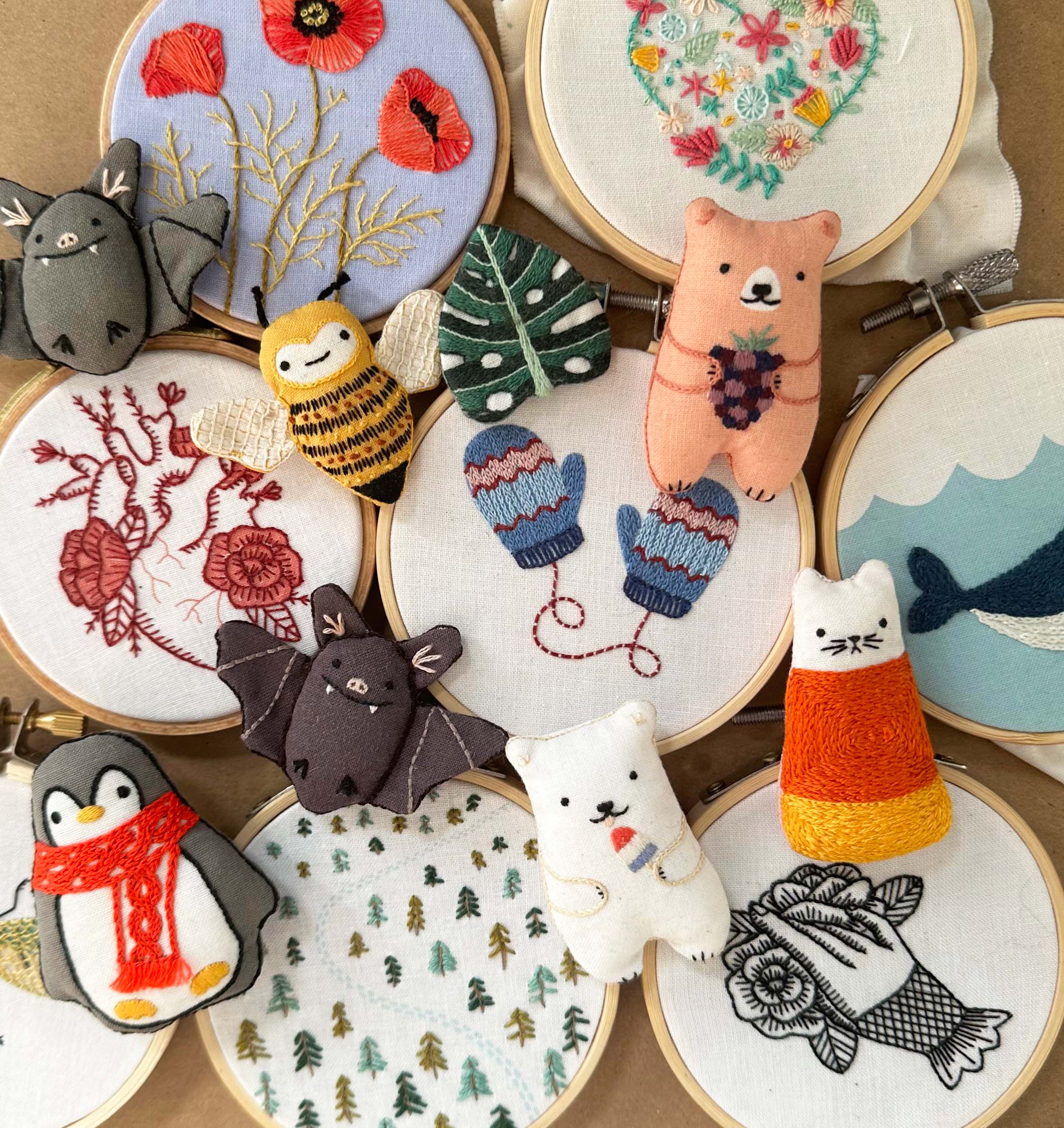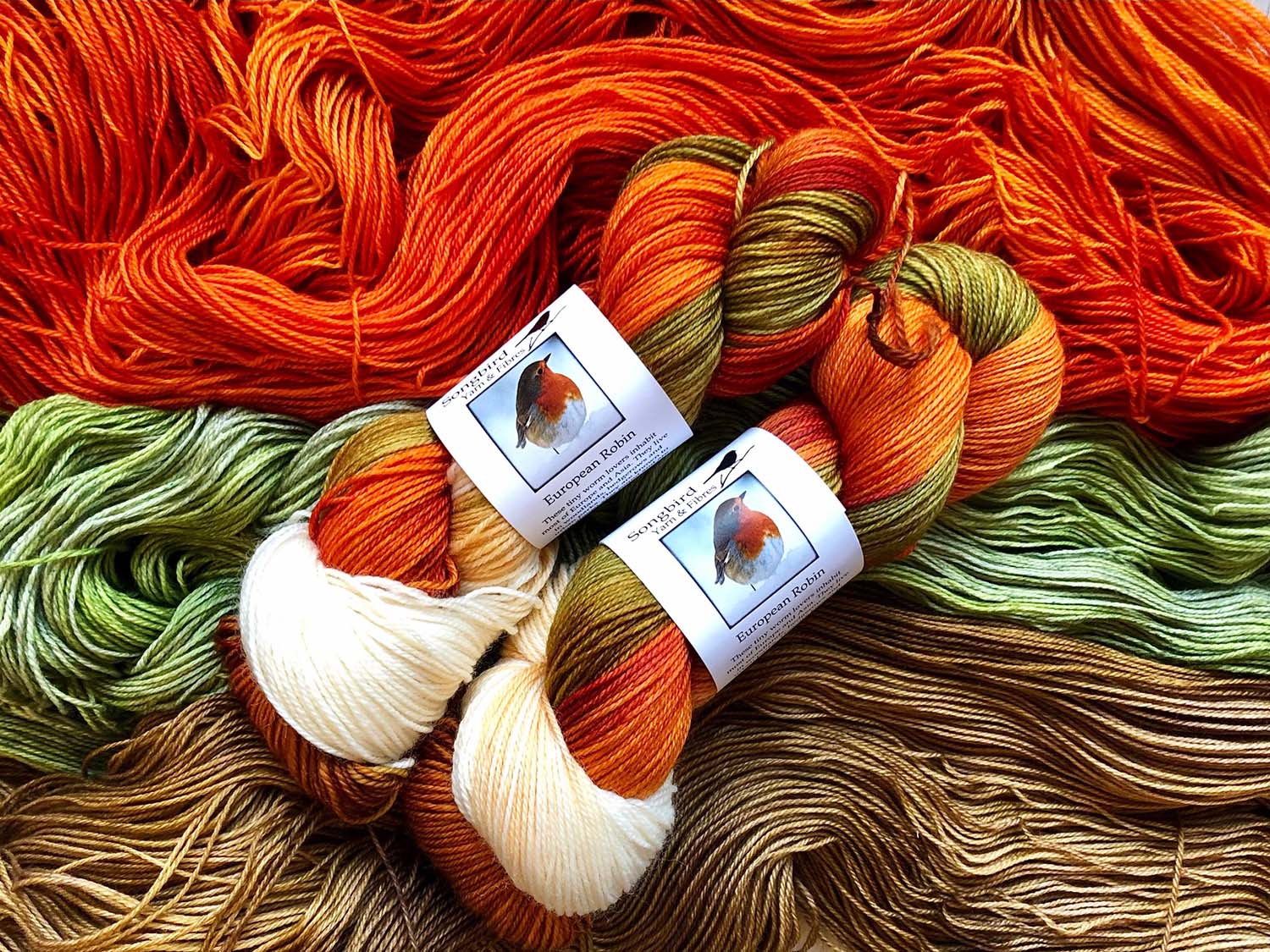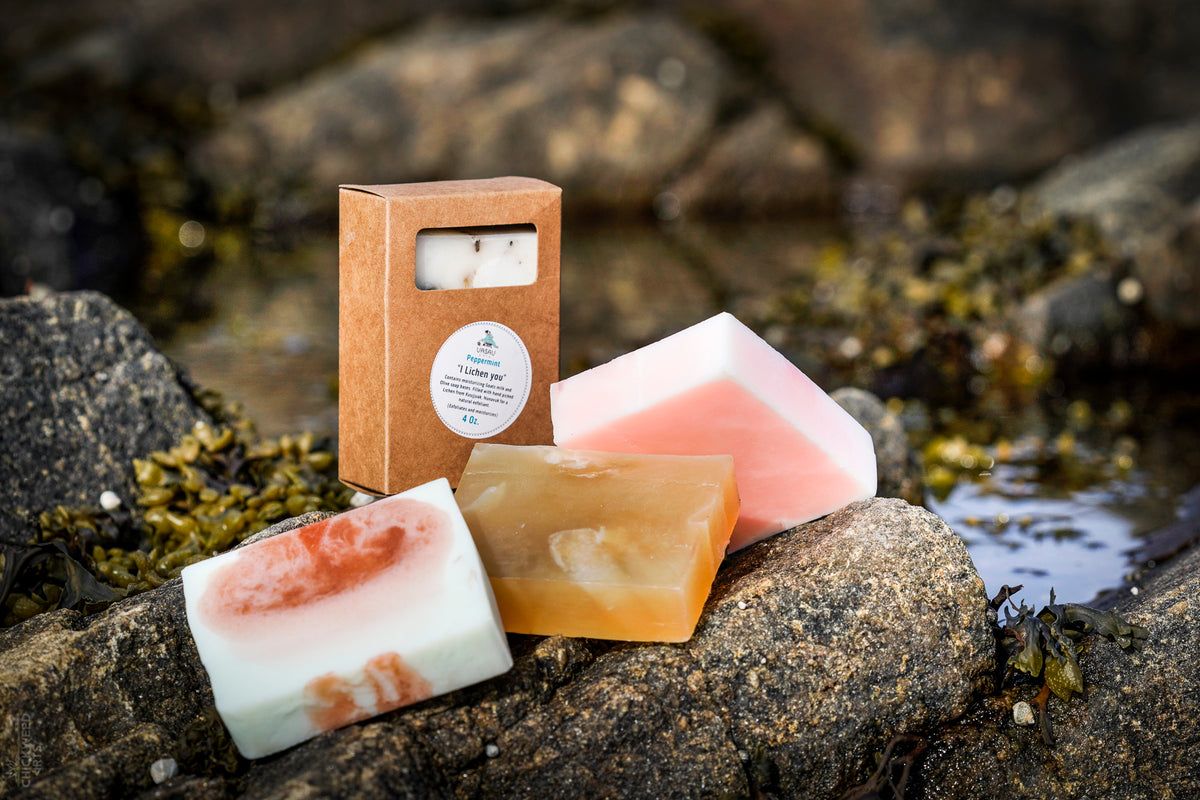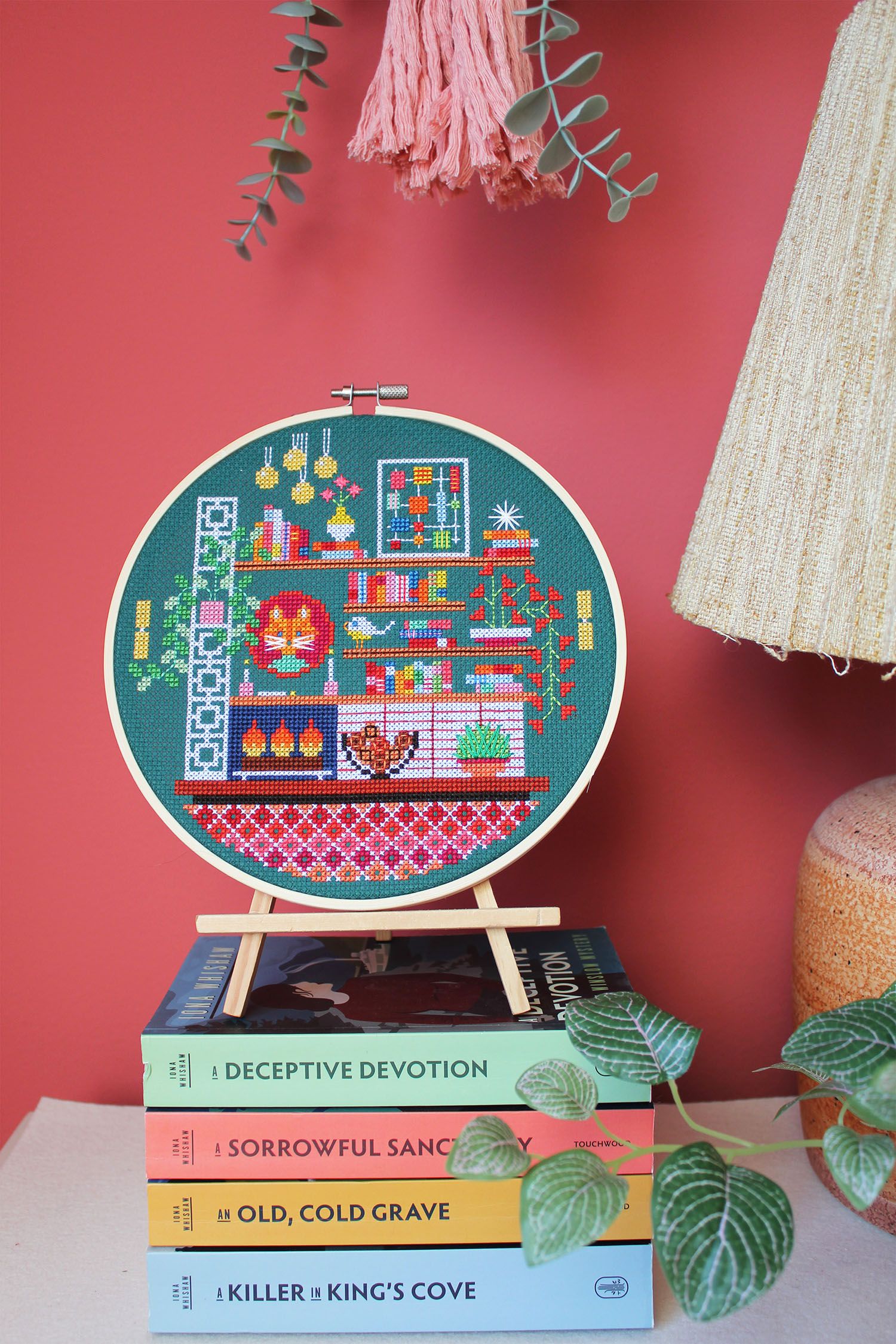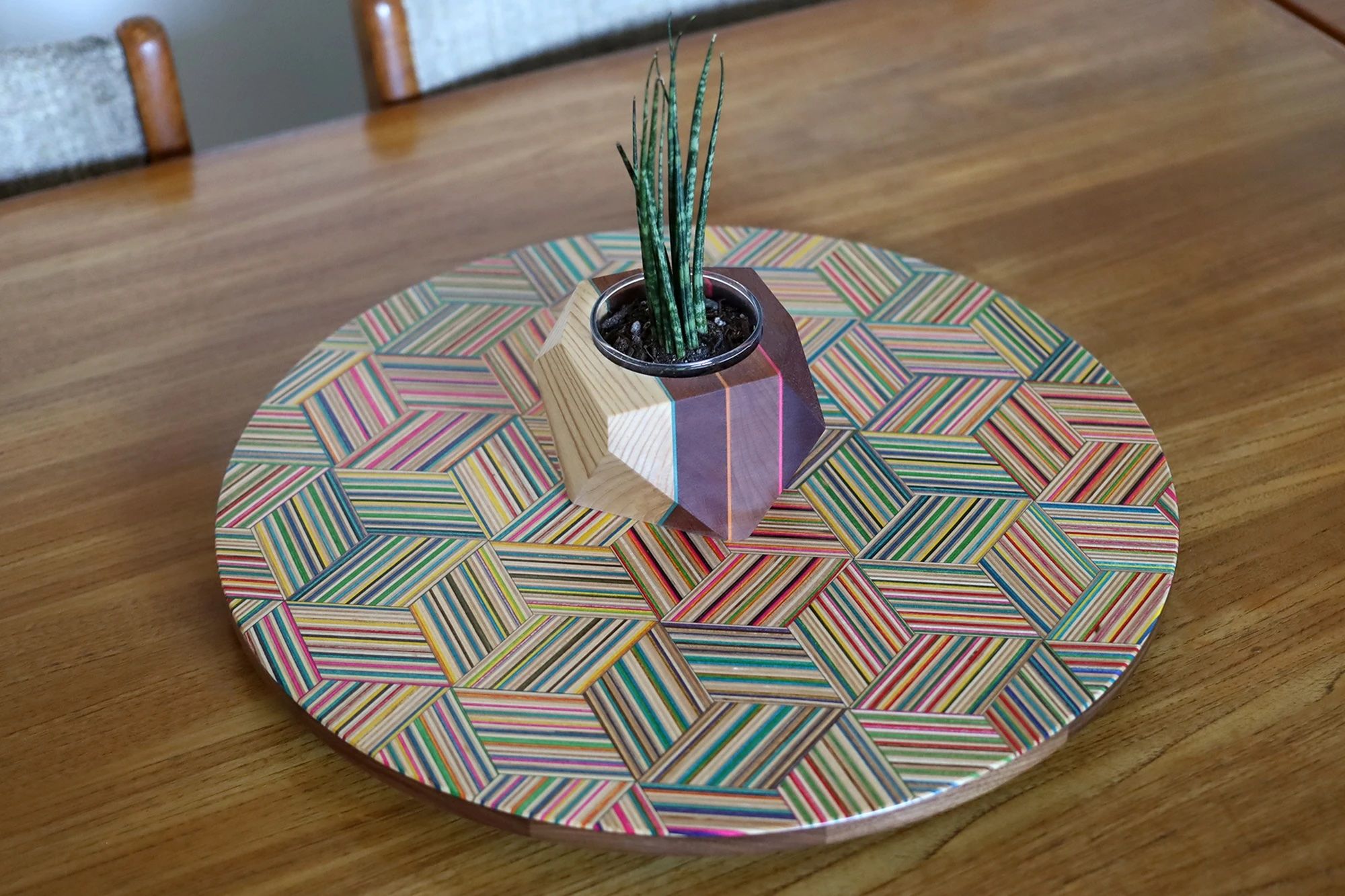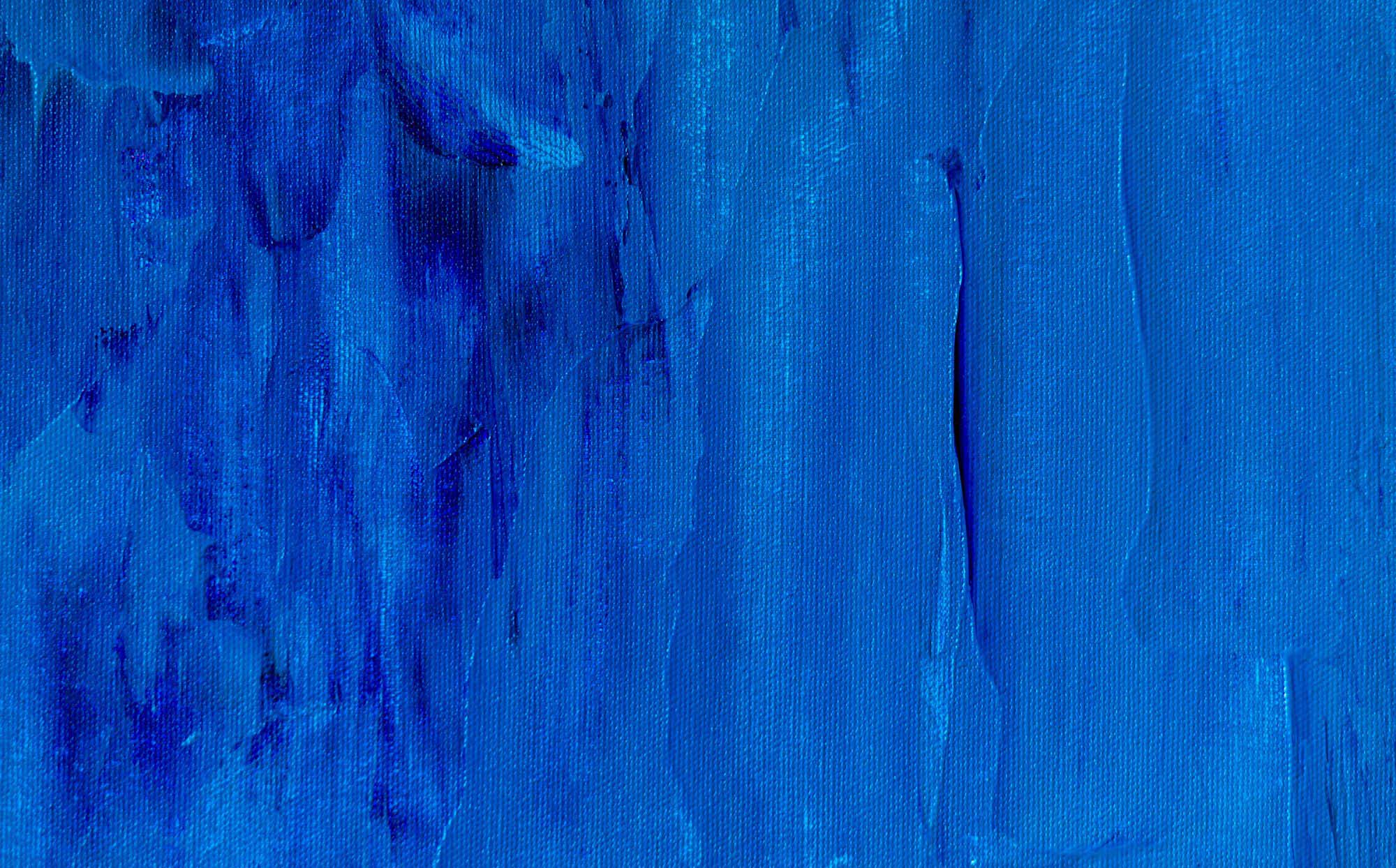I first met Julie Sinden at The Workroom, a fabric and craft supply retailer in Toronto that’s also a hub for the local maker community.
Sinden’s classes kindled my love affair with natural dyeing, and I remember when she first launched her natural dye kits, an exciting alternative to spending a fortune on shipping dye supplies from Maiwa in Vancouver. (Which I did anyways. Like I said: love affair.)
The kits were designed to be a starting point: just enough of the required supplies to try out natural dyeing (either with indigo or using other plants) or do a single batch, with no extras left over.
So when Corinna and I first talked about sharing the stories of how specific products came to be, Sinden’s dye kits immediately came to mind. Her idea was smart and timely, the packaging is top-notch and I am always inspired by the photos she shares on Instagram of creative projects customers have made with her kits. (Check out this beautiful indigo quilt and matching cushion, and this stunning indigo noren, and this lovely hooked rug.) Plus, she’s not just selling the kits on Etsy (though they’ve been super successful there) — her kits are available both in-store and online at Indigo as well as online at Anthropologie.
What’s her secret sauce? I got on the phone to find out. Read on for more, and comment below to let us know what product we should feature next.
(Interview has been edited for length and clarity.)
Workshop: How did you get started in business, and in natural dyeing?
Julie Sinden: I grew up with a very crafty mom who is very into textiles. Growing up, I was always doing that stuff with her. So I did a textiles program at an art school out in B.C. One of the instructors was super into natural dyeing, and she taught us in that first week of art school. And I kind of fell down the rabbit hole of it all, because it's a whole world that you can be obsessed with. My whole three years at art school, I did a lot of work exploring natural dyeing. And then when I graduated, for a while I was still living out in B.C. and doing a lot with wild colour and local colour.
Then I moved back to Ontario, and eventually Toronto. I did a studio tour one time and had a bunch of naturally dyed things for sale. I had also done a couple of things out of boiled wool. And the 10 boiled-wool hats sold in, like, 10 minutes. So I started making more, and one thing led to another, and then suddenly, I was a boiled-wool hat maker. I was just making hats like crazy. In 2007 I did the One of a Kind show for the first time with the hats, and then just got sucked into that whole world, because I was making money at it and the business was successful. I wasn't really doing that much dyeing anymore because I was so busy making all the hats.
But the one thing I kept up was that I was teaching at a few places, and eventually started teaching at The Workroom. That would have been shortly after they opened. So 10, 11 years now, I've been teaching [dyeing] classes at The Workroom.
W: And where did the idea to start these kits come from?
JS: I've been making the hats for 15 years, and I'm still doing that. But 15 years is a long time to be making the same thing. I was both wanting to do something new, and something that would be a little more creative again, but I also had the idea that I didn't necessarily want to just be making the thing over and over again.
I went to this conference for creatives where there was a woman who made macrame wall hangings. When I looked at her site, I saw that she sold the odd actual hanging, but what she was selling more of were all the supplies. And because I had been teaching at The Workroom, I'm always sending people off to where they can get the stuff. And at some point I realized, Oh, I could send them to me! And that was the germ of the idea.
Natural dyeing is a world where — it's not complicated, but there's almost a whole new language and it's hard to find the entry point. I think that's why people like to do classes. But with the kits, I thought, Oh, what if the whole idea is this is for someone who either doesn't want to or can't take a class? And they just want to try it for the first time. So the kit has the ingredients and the instructions so they can try dyeing for the first time without investing in supplies.
Originally I thought maybe it would be something that if someone had taken my classes, then they can go and do it again. The kit kind of facilitates that. But I think what it's ended up being more is for people who want to do dyeing for the first time who haven't taken a class. And then once you've used the kit, the next time you're Googling, you'll understand what they're talking about.
W: What was the process to get from idea to product?
The only product at first was the indigo kit. I did little baggies of the three ingredients and wrote up instructions. At first I was doing all of it myself, where I put it in one of those hard kraft paper envelopes, printed stickers on my home printer and then put them on Etsy and on my own website. They did start to sell a little bit, but not tons at that point.
I've done lots of creative projects over the years with [artist and illustrator] Jen Bulthuis, who used to make these little baby rattles and sell them in a hard kraft box that she silkscreened. And she said, you know, the packaging can be such a thing. So we collaborated on that. She took the label that I had done, rejigged it and made it into a box. And she now silkscreens the box.
Once I did that, it changed the product in a lot of ways. There's something very appealing about the actual box, and it’s also something that you can merchandise creatively, so I started to have wholesale interest. And even for shipping, I just wrap the actual kit in a piece of wrapping paper and stick the shipping label on it. I get lots of comments that people love receiving the kits because it feels like you’re getting this present in the mail.
At some point I realized, I'm selling people the ingredients to dye things, but I should also be selling them what you can dye. And that's when I started selling fabric and yarn and that kind of stuff. That's ended up becoming a not insignificant part of the business. And for me, having felted and embellished and steamed every single one of the hats, I’m like, someone orders fabric and I just cut it? It's very exciting for me.
W: Have you been selling the kits to an audience you already had, or do you think it’s a new audience? How did you find your customer base?
JS: In the beginning I thought, I can be the one who sells the dye to the people that take my classes. But I started selling more on Etsy. Then I did a couple fibre festivals in 2019. I did the Twist Fibre Festival and the Woodstock Fleece Festival, which ended up being just nuts. The one or two craft shows that I tried to do, it didn't fly at all. So I realized it's very much this niche market of fibre festivals and people.
But even that feels like it's changed since the pandemic. For a year, I was selling to a new audience, but people who were still fibre people. And since the pandemic, I feel like I've been selling to a new audience, who aren’t necessarily fibre people.
At the beginning of March 2020, Etsy started doing Google ads for all their sellers. For two months, it was free. And then the pandemic started like two weeks later. So people were home and DIY sales went way, way up. And then tie dye was a big thing last year. Suddenly, with the combination of those three factors, I was selling to people who just wanted to do tie dye on T-shirts with their kids, while they were stuck at home. And the natural aspect of my kits appealed to people. So that has become my audience in some ways.
Now I sell the dyes in bulk too, you don't have to buy it as part of a kit. I have repeat customers who started out with the kit and now they're buying it in bulk.
W: That’s really interesting. Everything in life is that combination of talent and skill and luck, right?
JS: I think that so much, because I would have had such a different year last year. I only started this business in 2018. It was just a really small thing that I did on the side.
W: You already had the brand Julie Sinden Handmade. Did you consider selling this under that brand? Or did you always want to start something new?
JS: That's a good question. It has been a complicated part of it. Even just with my social media — I don't have the capacity to run two social accounts. And they don't feel like they're the same thing. It is a challenge for me, because I am managing it all under one website, and one social media presence. And that doesn't always make sense.
But I don't think I ever wanted to have it as the same name. Partly, funnily, when I was at that conference and listening to that macrame person, the name The Love of Colour came to me and I liked it right away. And I wanted to have a brand that wasn't just my name. I feel like usually you have to bellyache so much about names. So it was nice not to have to, and to just roll with it.
W: What’s some of the larger wholesaling you’ve done?
JS: Last year, I got picked up by both Anthropologie and Indigo. Anthropologie was fun, but that was just for their online stores. Indigo, they’re selling the kits at retail and online.
It was kind of a funny thing. I was like, I don't know. I feel like this is a bit too niche. You know what's involved — [natural dyeing] is not a straightforward process, right? It's pretty involved tie-dyeing. But they have been selling well.
I also sold a bunch to Fabletics, which is Kate Hudson’s athleisure brand. It was a part of their subscription kit. There's a video on Instagram of Kate Hudson unboxing one of my natural dye kits and talking about how cool it is and that it really speaks to her. People lost their minds about that when I posted it on my Instagram.
W: How have the kits evolved from the originals to now? Has the indigo kit changed from the original?
JS: The indigo kit, no, not really. It's the same amount of ingredients. It was a long process to refine the instructions to where I don't get so many questions. For the longest time I was still printing the instructions myself because I wanted to be able to change them easily. I guess little things have changed, like I have to put paper stuffing in the box so the ingredients don't bounce around, but the indigo kit basically is the same.
It just evolved into the box, I refined the instructions and then slowly added different kits. I did the natural dye kit pretty quickly after. And then maybe six months later added the block printing one. And then after that the clay one. I still have another one I'm going to do at some point. But they've mostly been the same thing.
W: What’s next for The Love of Colour?
JS: It's been quite a ride, I'll tell you. It feels quite precarious too. It's hard to know if it will continue and in what capacity, you know what I mean? I already know that from the hats. I did have a bunch of years where they were super popular at the One of a Kind. Everywhere I went, people would be like, oh my god, every time I get on the streetcar, there's four people wearing your hats. And that can't sustain forever, right?
It's been good and exciting. But I have no idea what the next two, three years are going to look like. At the moment, I'm more interested in whether my kid’s going to be in school tomorrow. And I think a lot of us have gotten a little better at living in the whirlwind. Living in the month, maybe. How can you possibly project what things are going to look like in November?
Thanks to Julie Sinden for taking the time to speak with us. You can see more of her products and her work on her website and on Instagram.
Who should we speak with next? Let us know in the comments!

